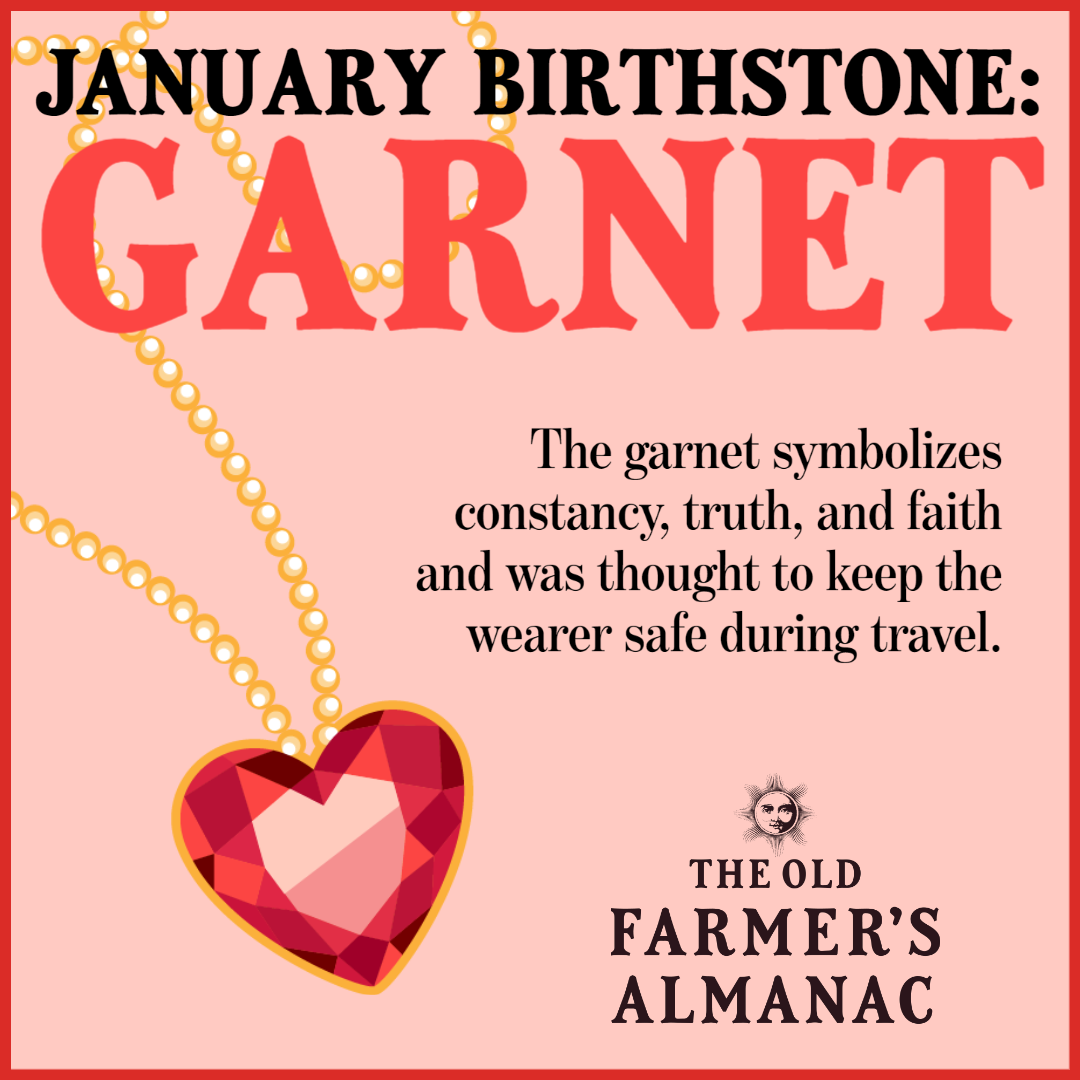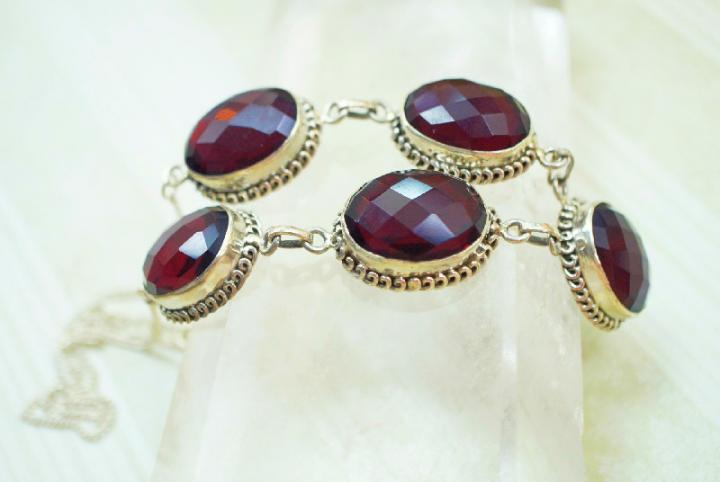The January birthstone, garnet, is surrounded by folklore and was known for its healing properties. This beautiful gem’s name references the bright-red pomegranate fruit, although it actually comes in a diverse range of colors. Learn all about the garnet’s history, meaning, and symbolism!
Garnet’s Diverse Colors
While best known for its deep red hue (given its close association with the pomegranate), garnet naturally occurs in a range of colors, including greens, yellows, and even blues. Garnets can range in appearance from completely opaque to transparent.
Garnet is actually made up of many minerals, including pyrope, almandine, spessartine, grossular, andradite, and uvarovite, which are important as gems.
- Pyrope is exclusively red, and is the stone most widely associated with early jewelry pieces.
- Almandine ranges from deep red to brownish red and black, while spessartine is found to be mostly orange.
- Andradite can be red, yellow, brown, and green, and grossular is commonly green, but may also be brown-red or yellow.
- Uvarovite is a rare, bright green garnet.

Meanings and Folklore
A great amount of folklore surrounds the garnet, stemming from a diverse range of cultures and time periods. One common thread is the idea that garnet protects its wearer from something—be that enemies, illness, or bad dreams!
- For centuries, garnet was viewed as a symbol of love and friendship, and a way to promote protection and healing.
- In third and fourth-century Rome, garnet would be used for protection by warriors going into battle. It was also thought to provide safe passage on long journeys.
- Over the years, royalty also favored garnet jewelry and garment adornments for their protective abilities.
- Native American healers thought garnet possessed the ability to protect against injury and poison, while in ancient Egypt, it was thought to ward off bad dreams and cure depression.
- According to biblical legend, Noah is said to have used a garnet gem on the Ark as a source of light.
- In times of battle, Asian tribes used garnets as bullets, believing they would cause more harm.
- In ancient and medieval times, gems like garnet were used as remedies for inflammatory diseases and to soothe the angry heart.
- During the Middle Ages, garnets hung around the neck were known as a cure for indigestion and sore throats.
- In more modern times, its suggested garnet provides wearers with loyalty and unchanging affection. It is also thought to encourage success in business!

History of Garnet
Garnets are formed when metamorphic rocks are subjected to heat and pressure that break the chemical bonds in the rocks and cause minerals to recrystallize. Some garnets also occur in igneous rocks, like granites. They can be found in sandy sediments and sandstones—those red-colored grains found along beaches are garnets.
The word “garnet” originates from the Latin word granatus, meaning “seeds,” likely due to its pomegranate seed-like appearance. In early French, grenat was used as a noun to refer to the deep-red gemstone. Then, when borrowed into English, grenat became “garnet.”
One of the oldest known gemstones, garnet’s history dates back to the Bronze Age. The tombs of ancient Egyptian pharaohs were discovered to include garnet necklaces and talismans, an inscribed ring or stone, thought to have magic powers and bring good luck. It was highly valued by the ancient Greeks and Romans, who used garnet signet rings to wax-seal important documents.
Its popularity continued through the Victorian Era before it was no longer a sought-after gem. Today, though, its beauty and color diversity make it ideal for all types of jewelry, including earrings, brooches, pendants, and engagement rings. (Note: With a Mohs Hardness rating of 6.5 to 7.5, be sure to store garnet jewelry in a way where it does not come in contact with harder stones, which will cause scratching!)
Due to its tendency to break into irregular grains, garnet is not simply for fashion—it is also used as an abrasive. Garnet is used in sandpaper for bare and unfinished woods, along with sanding belts, discs, and strips. It’s also utilized for water filtration in abrasive blasting material, a process called water jet cutting.
Learn More











